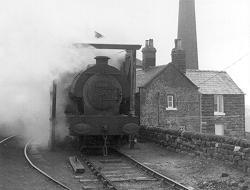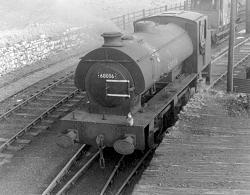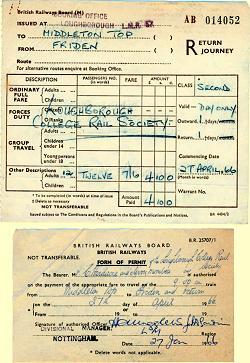Part 2 - History of the Cromford and High Peak Railway
Besides the Hopton Incline, the C&HPR was well known for two other unusual features. A few miles after Hopton was an 80 degree turn in the line with the tightest curve on British Railways, of only 55 yards radius. Known as Gotham curve, this seemingly unnecessary restriction was the reason why only short wheelbase wagons and small locomotives could be used on the line. Also, the C&HPR supplied drinking water for several villages on its route. Ex LNER locomotive tenders were used, and shunted into sidings at various locations. The tenders at Parsley Hay were a common sight alongside the main A515 road to Buxton. Water supply was a problem all along the line and had to originate from Cromford, and this was true for the stationary engines and locomotives.
 |
At Middleton Top (4) the single line locomotive "depot" consisted of a short corrugated iron clad brick building. The windows being north facing gave little light inside especially when the door was dragged across the front. Water that drained from the depot roof was piped to a nearby small reservoir, or pool. The Middleton Top winding engine then pumped water from the reservoir to a tower, which was used to supply water to the locomotive tank. |
 |
 |
 |
In 1966/7 I was the treasurer, then secretary, of the Loughborough University Railway Society, and found that such an "august" body could readily obtain permission from British Railways to visit railway establishments around the country. Two brake van trips were arranged on the C&HPR on the 27 April 1966 and on the 25 January 1967, just a few months before the line was closed. The cost for 12 persons from Middleton Top to Friden was a mere £4-10-0d! By 1966 there was only regular workings on a Monday, Wednesday, and Friday on the C&HPR from Middleton Top to Friden. This was made with a train made up of a few limestone wagons, a water tender and a brake van, or sometimes just a water tender. |